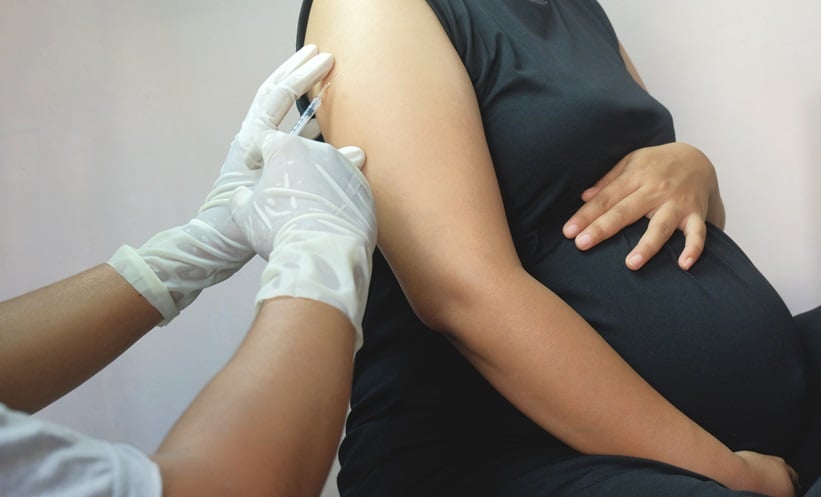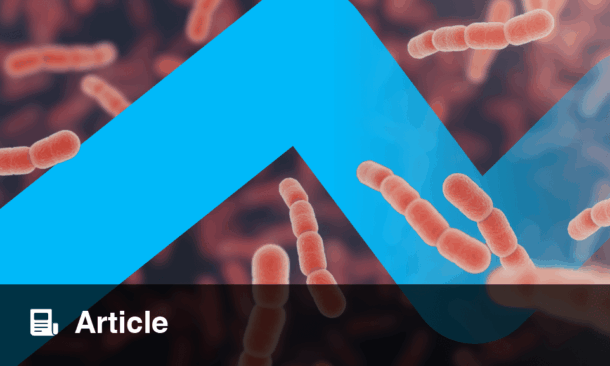Elisabet Stener-Victorin | Professor, Department of Physiology and Pharmacology, Karolinska Institute, Stockholm, Sweden
Citation: EMJ Repro Health. 2024;10[1]:45-48. https://doi.org/10.33590/emjreprohealth/NYPQ3097.
![]()
What inspired you to dedicate your research career in reproductive endocrinology to polycystic ovary syndrome?
At the beginning of my research career, I investigated whether electrical stimulation could improve blood flow in the uterine arteries before in vitro fertilisation (IVF). In short, we found that we could regulate sympathetic nerve activity and improve blood flow prior to embryo transfer. My PhD supervisor, Per Olof Jansson, suggested that we try this treatment in clomiphene-resistant females with polycystic ovary syndrome (PCOS). That was 30 years ago, and I quickly realised how little we knew about the underlying pathophysiology that led to their reproductive, metabolic, and also psychiatric symptoms. Together with clinicians and basic scientists, I set up a cross-sectional study and conducted thorough research on females with and without PCOS. This included measuring insulin sensitivity with the euglycemic hyperinsulinemic clamp, biopsies of adipose tissue, an in-depth characterisation of fat, and MRI of the trunk to measure body fat distribution as well as the ovaries and uterus. We measured muscle sympathetic nerve activity, and were the first to demonstrate that females with the syndrome have high sympathetic tone. This in-depth phenotyping largely determined my future projects. In parallel, I developed new PCOS-like rodent models and used already established models to enable mechanistic studies.
Today, almost 30 years later, the PCOS research community has made great progress and I hope that we will soon be able to offer more targeted treatment to women with PCOS.
Can you elaborate on the significance of understanding genetic versus epigenetic heritability in the transmission of PCOS and associated comorbidities across generations?
Like other complex diseases such as Type 2 diabetes, PCOS is a highly hereditary disease. However, only a small part of the heritability can be attributed to the 20 susceptibility loci identified by genome-wide association studies (GWAS). Nonetheless, reproductive and metabolic phenotypes are associated with specific PCOS susceptibility loci, supporting the role of genetic factors in pathogenesis. A recent study has shown that males with high polygenic PCOS risk scores have an increased risk of obesity, Type 2 diabetes, and cardiovascular disease, as well as hair loss, suggesting that males are also affected by PCOS. However, it is still unclear how PCOS is inherited. Studies suggest that non-genetic factors may play a role. The variability in inheritance could be due to interactions between genetic and epigenetic factors, with the latter being caused by a different maternal-fetal environment.
The Barker hypothesis states that early adaptations to suboptimal conditions in utero lead to unfavourable health outcomes later in life, known as the ‘Developmental Origins of Health and Disease’ hypothesis. Females with PCOS have greater weight gain at the beginning of pregnancy and maintain high levels of circulating androgens and anti‐Müllerian hormone throughout pregnancy. These reduce the aromatase activity of the placenta and have a detrimental effect on fetal development, predisposing the children of PCOS mothers to reproductive, metabolic, and psychological disorders. In addition, PCOS per se is an independent risk factor for gestational diabetes and hypertension. Our findings as well as other findings support the idea that an unfavourable intrauterine environment could cause the same phenotypic heritability as genetic factors via epigenetic processes, but to date the underlying mechanism is unknown.
Your lab focuses on bridging preclinical and clinical investigations in PCOS. How important is this approach in advancing our understanding of the condition?
This is of fundamental importance as there is no animal model that fully resembles human PCOS. Our animal models are good tools to study the underlying molecular mechanisms and to explore possible epigenetic inheritance. The development and use of in vitro culture models of human primary tissue have evolved dramatically with the establishment of organoid systems. These are powerful tools that can be used to further investigate identified molecular markers and to test known and new drugs. The combination of preclinical and clinical projects is therefore a powerful tool for all types of research environments.
Could you explain the main triggers of PCOS that your lab has identified through the use of PCOS-like mice models?
In several of our experiments in which we exposed mice to continuous dihydrotestosterone (DHT), which specifically activates the androgen receptor, from peripuberty to adulthood, and concomitant treatment with flutamide, we observed a complete preventive effect, clearly demonstrating that the PCOS-like reproductive, metabolic, and behavioural phenotypic traits are triggered by activation of the androgen receptor. When we use the same model to study embryonic and placental development, we observe the same phenomena with an almost complete reversal of fetal growth and placental growth and function. In addition, the DHT-induced PCOS-like model negatively affects the populations of immune cells in reproductive, metabolic, and immunological tissues in a PCOS-like mouse model. These results are of great importance as it is known that immune system dysfunction is a major component of the reproductive complications and metabolic diseases that are highly prevalent in females with PCOS. We also show that immune populations in these tissues are differentially affected, which emphasises the importance of studying the immune system in the right context; immune cells in the blood do not necessarily reflect what is going on in different tissues. Taken together, these findings support the idea of targeting the androgen receptor pathways in the treatment of PCOS.
In your studies, have you found evidence to suggest that men can also transmit PCOS? If so, what are the implications of this finding?
We have not yet conducted a study to definitively determine whether men can pass the syndrome on to their daughters. However, we have combined studies in humans and mice to determine how and to what extent PCOS-like reproductive and metabolic traits in men are passed on to future generations. A registry-based study and a case-control study show that sons of women with PCOS are three times more likely to be obese and have high LDL cholesterol, which increases their risk of developing insulin resistance and Type 2 diabetes later in life.
Accordingly, the male offspring of pregnant mice fed an obesogenic diet and exposed to DHT (F0), mimicking pregnant women with PCOS, show reproductive and metabolic phenotypes across generations. The offspring were fed a normal diet and followed into adulthood, where their reproductive and metabolic profiles were examined. To find out whether the symptoms are passed on to the next generations, the first-generation male mice (F1) were mated with healthy female mice to study the reproductive and metabolic profile of the second-generation offspring (F2). The whole process was then repeated for a third (F3) generation to investigate whether the phenotype could be passed on over several generations. In this way, we were able to demonstrate that obesity and high androgen levels during pregnancy can lead to long-term health problems in the male offspring. These problems can affect the metabolism and reproductive system, and can even be passed on to future generations. We also analysed small non-coding RNAs in the sperm of the three generations of mice and found different types of small non-coding RNAs that were differentially expressed in each generation. Moreover, these molecules overlapped with those we found in the bloodstream of PCOS offspring. These results are important because they highlight the risk of inheriting health problems through the male side of a family, a previously unknown risk. However, in this study, we did not follow the female offspring of first- and second-generation males, and therefore cannot conclude that males can also transmit the syndrome to their female offspring.
What are some of the most promising discoveries or insights that have emerged through your work with tissue biopsies investigating PCOS treatment?
My group was one of the first to demonstrate that in females with PCOS, multiple transcriptional and epigenetic changes in skeletal muscle and adipose tissue are relevant to the development of the disease, and that muscle contractions partially restore the epigenetic and transcriptional changes in these tissues. In addition, our recent study on skeletal muscle suggests that hyperandrogenic females with PCOS have higher levels of extramyocellular lipids and less oxidative and insulin-sensitive Type I muscle fibres. These may be key factors leading to insulin resistance in PCOS muscle, while electrical stimulation-induced tissue remodelling may be protective. The current single-cell and spatial reference maps of human adipose tissue, skeletal muscle, and endometrium of healthy females provide a rich resource for the study of genes, traits, and cell type-specific functions. Whether adipose tissue, skeletal muscle, and endometrium of females with PCOS have specific and dominant cell types, and how these specific cell types contribute to the pathology of PCOS is still unexplored and a topic we are currently working on.
One of your most highly cited papers outlines recommendations for the assessment and management of PCOS. Can you summarise the latest developments in our understanding of this?
This publication, along with many others, is a joint effort of the International Evidence Based Guidelines, to which I contributed a section related to emotional well-being and models of care. The international guideline is updated every 5 years. In 2023, the evidence for PCOS was reviewed, synthesised, assessed for quality and integrity, and presented in a 6,000-page technical report with improved certainty of evidence and strength of recommendations. It is a living guideline that responds to rapidly evolving advances in research.
Considering your hugely successful career to date, what has been your proudest achievement?
It is difficult to choose the proudest achievement because most of what we have done builds on each other. If I had to pick one particular moment, it would be the publication of our findings in Nature Medicine,1 in which we were able to show that daughters of women with PCOS are more likely to develop PCOS in adulthood. The remarkable discovery that PCOS-like reproductive and metabolic traits induced by exposure of pregnant mice to DHT are passed on from mothers (F0) to daughters (F1), granddaughters (F2), and even great-granddaughters (F3) attracted a lot of attention. In addition, the transcriptional and mitochondrial disorders of oocytes are associated with this transmission. Importantly, several of the transcriptomic signatures were also detectable in the blood of daughters of women with PCOS, suggesting a role in the epigenetic inheritance of the syndrome in humans. Consistent with these findings, we also show that the sons of women with PCOS are more likely to be obese. These intriguing results suggest that epigenetic changes carried by germ cells and/or somatic cells can transmit PCOS across multiple generations. The intriguing questions we must now ask ourselves are how men are affected and what the epigenetic contribution of inheritance is.







